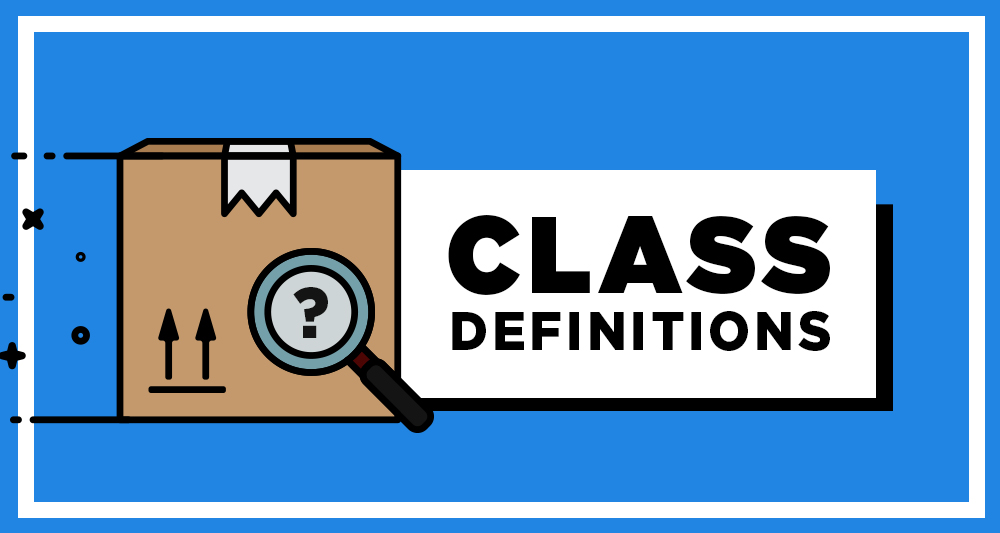Often assumed and misunderstood, reclassifications by carriers can be difficult to follow. This article will review some of the most common questions we see in the LTL division at England Logistics and provide a general overview of LTL class definitions.
Classification rules are established by the National Motor Freight Traffic Association, Inc. (NMFTA), which is a nonprofit membership organization based in Alexandria, VA. The NMFTA established the National Motor Freight Classification (NMFC) system, which groups commodities and establishes proper levels of packaging specific to the commodity types.
The NMFTA could be compared to the NCAA, and the NMFC system to the rules of college football. While the NCAA does not own the idea of college football, it is a group of the most prominent college programs.
Similarly, the NMFTA does not own domestic transportation, but you will find many of the key LTL players in the industry have adopted the freight rules defined by the NMFC system.
WHY IS CLASS NECESSARY IN LTL RATING?
Class is necessary to balance the cost of shipping various items. Let’s pose a scenario. You are shipping a standard 48x40x48 pallet of bricks to a location. Your neighbor is shipping a standard pallet of pillows to the same location. Your bricks weigh 1,000 lbs. and your neighbor’s pillows weigh 150 lbs. Both shipments occupy the same amount of space on a trailer. If LTL rating was strictly based on weight and distance, it would be much more expensive to ship my bricks than my neighbor’s pillows.
Class is necessary to balance out the shipping cost relative to the trailer space occupied.
Generally speaking, the lighter freight will often see a higher class, and the more dense freight will be on the lower end of the spectrum.
WHAT TYPES OF CLASSES ARE THERE?
While the rules of each class are specific to the National Motor Freight Classification code, it’s easiest to categorize every class into two types: general and specific. The general NMFC codes often contain the term NOI (Not Otherwise Indicated). NOI is defined within the NMFC as, “Not more specifically described herein.” A common general NMFC used would be 156600, which is any plastic product that is not more specifically described in the NMFC. An example of a specific NMFC code would be 156620, which is plastic aprons or bibs, plastic film, expendables, not combined, reinforced nor assembled with other materials, or in boxes. There are several specific factors contained within 156620 that need to be met exactly in order for this specific NMFC code to be utilized. This results in many specific NMFC codes being reclassified upon inspection to a general NMFC code.
National Motor Freight Classification codes may include subcodes. Within the specific NMFC code, there may be several classes that are applicable. The subcode is used to designate the correct class. The factors that appropriate the correct subcode are dependent on the parameters of the NMFC code. These factors may be the overall density of the freight, the material type, the value, the dimensions, the capacity, or the packaging or set-up of the freight. The most common factor that contributes to the appropriation of a general NMFC subcode is the density of the freight. Density is the average pounds per cubic foot, which can be determined using the following formula: weight / [(length/12) x (width/12) x (height/12)].
WHAT HAPPENS WHEN THE WRONG CLASS IS ON THE BILL OF LADING?
LTL carriers have dedicated class inspectors that examine freight to ensure it has been properly classified. While the inspection can occur at any time during the transit, we find that most carriers strive to have the freight inspected at the origin terminal within the first few days of pick up. If the carrier deems the freight is incorrectly classed, an inspection form will be generated and the freight bill will be corrected to bill at the new class. LTL carriers will charge an administrative fee on top of the new charges, generally $20 – $40.
Class is a staple of the LTL industry, and necessary for rates to stay consistent with carrier costs. While necessary, the intricacies can be a challenge to keep up to date. Avoid unnecessary challenges and charges by being proactive and shipping in the appropriate class.
###
The England Logistics Less-Than-Truckload (LTL) division can provide nationwide service for shipments of almost any shape or size. To bring simplicity to shipping processes, LTL offers a one-stop solution with the information needed to get shipments on the road. Dedicated team members are available 24/7 to ensure a timely and cost-efficient delivery.



